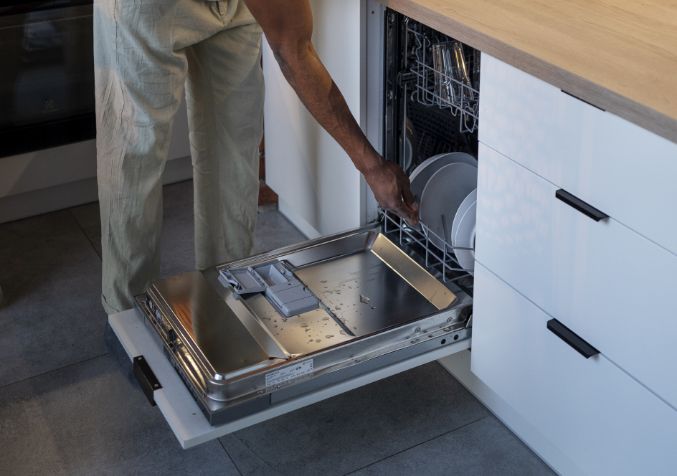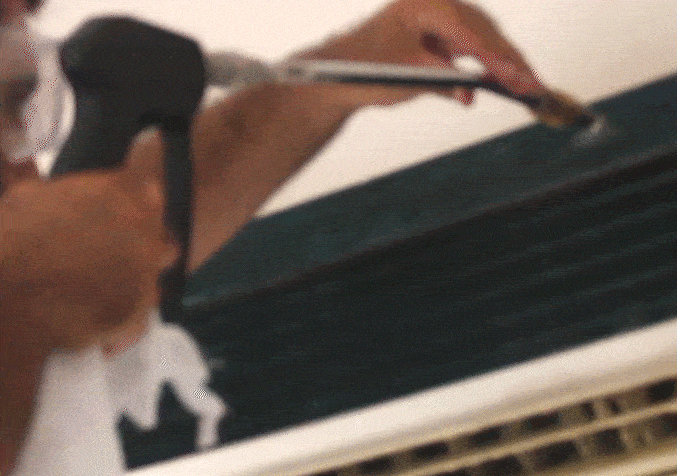Save Money on Your Energy Bill: Tips for Reducing Power Consumption on Household Appliances
Published on May 2, 2023

Do you want to save money on your energy bill? One effective way to do so is by reducing the power consumption of your common household appliances. In this blog post, we’ll provide you with tips and information on how to do just that including:
In today's blog we'll discuss:
Top 3 Power-Hungry Household Appliances

1. Air Conditioners
On average, air conditioners use around 40% of the average household’s energy consumption. Running a 2.5 kW split system air conditioner for 5 hours a day can cost approximately $300 a year, while a larger system of up to 6 kW can cost more than $500 a year.
How to reduce usage: Consider using a programmable thermostat to regulate the temperature and ensure your air conditioner is cleaned and regularly serviced to maintain efficiency.

2. Electric Ovens and Cooktops
Running an electric oven for 1 hour at 200°C can cost around 60 cents, while a 2,200-watt induction cooktop used for 1 hour can cost around 30 cents. This means you could spend anywhere from $100 to $200 a year if both these appliances are used for just an hour a day.
How to reduce usage: Make sure you use the right size cookware for your cooktop and oven and avoid opening the oven door while cooking to prevent heat loss.

3. Clothes Dryer
Running a clothes dryer for just 1 hour can cost around 65 cents, and as much as $150 a year. On average, a clothes dryer uses approximately 3.3 kilowatt-hours (kWh) of electricity per cycle. If you run your dryer for an hour every day, it will consume around 100 kWh of electricity per month, costing you anywhere from $30 to $45, or more than $350 a year.
How to reduce usage: Where possible, air-dry your clothes instead of using a dryer, or use a dryer ball to reduce drying time.

RECOMMENDED READING
5 Cunning Ways to Cut Your Laundry CostsHow can you tell if your appliances are energy efficient?

If you're looking to reduce your energy bill or minimise your carbon footprint, it's important to know how to tell if your appliances are energy efficient. In Australia, there are a few simple ways to check:
- Look for the energy rating label. All new appliances sold in Australia must have a label that shows how energy efficient they are. The label uses a scale from 1 to 6 stars, with 6 stars being the most energy efficient and 1 star being the least. You can use this label to compare the energy efficiency of different appliances and choose the most efficient one.
- Check the wattage of the appliance. A higher wattage generally means higher energy consumption, so look for appliances with a lower wattage if you want to save energy. You can find the wattage on the appliance itself or in the user manual.
- Look for appliances that have been certified by a third-party organisation, such as Energy Rating. These organisations test and certify appliances that meet certain energy efficiency standards, so you can be sure that a certified appliance will use less energy than a non-certified one.
- Lastly, consider the age of your appliances. Older appliances are generally less energy efficient than newer ones, so if your appliances are more than 10 years old, you might want to consider replacing them with newer, more energy-efficient models.
6 Essential Tips for Reducing Energy Usage
Aside from using energy-efficient appliances, there are several other things we can do to reduce our energy usage and save money:
Tip #1 Unplug Appliances When Not in Use
Many appliances consume electricity even when they're not in use, a phenomenon called "standby power" or "phantom load." To prevent this unnecessary power consumption, unplug appliances when you're not using them. This includes chargers, TVs, computers, and other electronic devices that have a standby mode.
Tip #2 Use Power Boards
Power boards (extensions) can help save energy by allowing you to turn off multiple devices at once. This eliminates standby power consumption and reduces your energy bill. It's also more convenient than unplugging each device individually. For example, you can plug your TV, Cable TV box and soundbar into a power board and turn them all off with the flip of a switch.
Tip # 3 Adjust Your Thermostat Settings
Heating and cooling account for a significant portion of your energy usage. As mentioned earlier, by simply adjusting your thermostat settings, you can reduce your energy usage and save money. In summer, set your thermostat to 20°C or lower when you're at home and awake, and lower it by 6-9°C when you're sleeping or away from home. In winter, set your thermostat to 26°C or higher when you're at home and awake, and raise it by 4-6°C when you're sleeping or away from home. Even a degree or two can result in savings over time.
Tip #4 Optimise Lighting
Lighting can also consume a significant amount of energy. Replace incandescent light bulbs with energy-efficient LED bulbs, which use less energy and last longer. Turn off lights when you're not in the room, and make use of natural light whenever possible. For example, open curtains during the day to let in sunlight instead of turning on a lamp.

Tip #5 Use Your Dishwasher Efficiently
Your dishwasher can also contribute to your energy usage. To use it efficiently, only run it when it's full, and use the "energy-saving" mode if available. Avoid using the "rinse hold" feature, as it uses extra water and energy. Additionally, try air-drying your dishes instead of using the dishwasher's drying cycle.
Tip #6 Use Natural Light
Open curtains and blinds to let in natural light instead of using artificial lighting. Artificial lighting has become a fundamental aspect of our modern lives, but it comes at a cost. By choosing natural light instead of artificial lighting, we can significantly reduce our energy consumption and carbon footprint.
Reduce Your AC Power Consumption with an Electrodry Professional Air Conditioner Cleaning

With air conditioners being one of the most energy-sapping appliances in your house, regular cleaning is a must. Electrodry’s aircon cleaning process involves a thorough inspection of your unit to identify any potential issues, followed by a deep cleaning of the internal components to remove dirt, dust, and other contaminants. We also clean and disinfect the air filters to improve indoor air quality and prevent the growth of harmful bacteria and mould.
By choosing Electrodry for your aircon cleaning needs, you can rest assured that you are receiving a high-quality service from experienced professionals. Our team uses the latest tools and techniques to deliver fast and efficient cleaning, and we are committed to providing exceptional customer service every step of the way.
Featured Electrodry Air Conditioner Cleaning Locations




